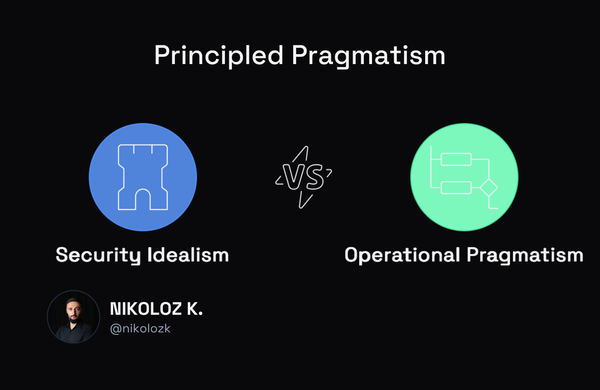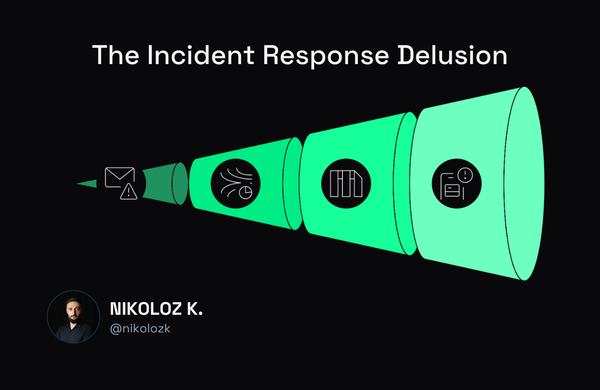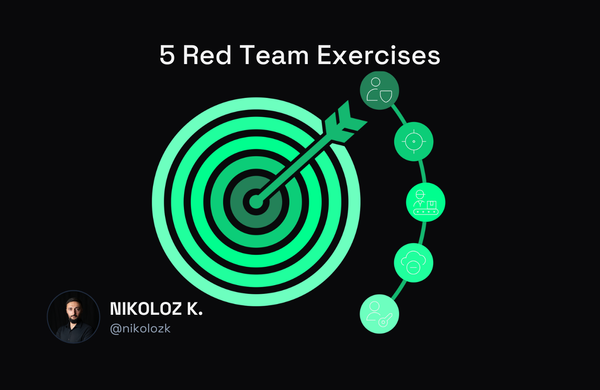The CISO Role is Becoming Impossible - Here is How to Succeed

Nikoloz Kokhreidze
Learn about the challenges that make the CISO role feel impossible, from the ever-expanding scope of responsibilities to the war for cybersecurity talent. Discover strategies for success, including staying agile, partnering with the business, and prioritizing ruthlessly.
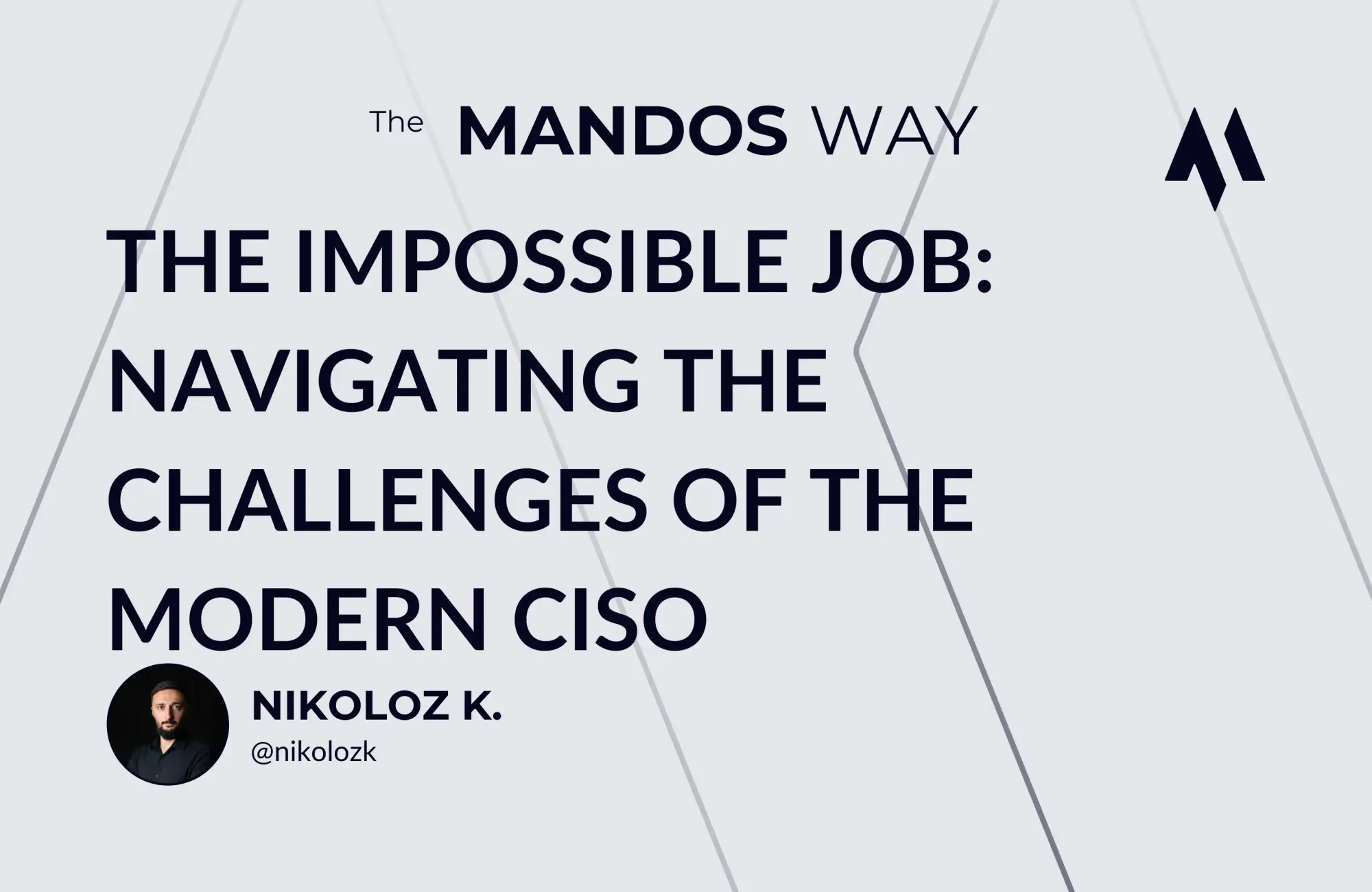
"The role of the CISO is like trying to solve a Rubik's cube blindfolded while riding a unicycle on a tightrope."
This quote perfectly encapsulates the complexity and pressure of the job. Modern day CISOs are expected to be technical experts across all security domains, business strategists, effective communicators, inspiring leaders, and fully accountable executives - all while juggling an ever-expanding set of responsibilities with limited resources.
Throughout my career, I've witnessed firsthand the transformation of the CISO role over the years. What was once a primarily technical position has morphed into a multifaceted, high-stakes job that demands a rare combination of skills. In this blog post, we'll explore the key challenges that make the CISO role feel impossible at times and discuss strategies for success.
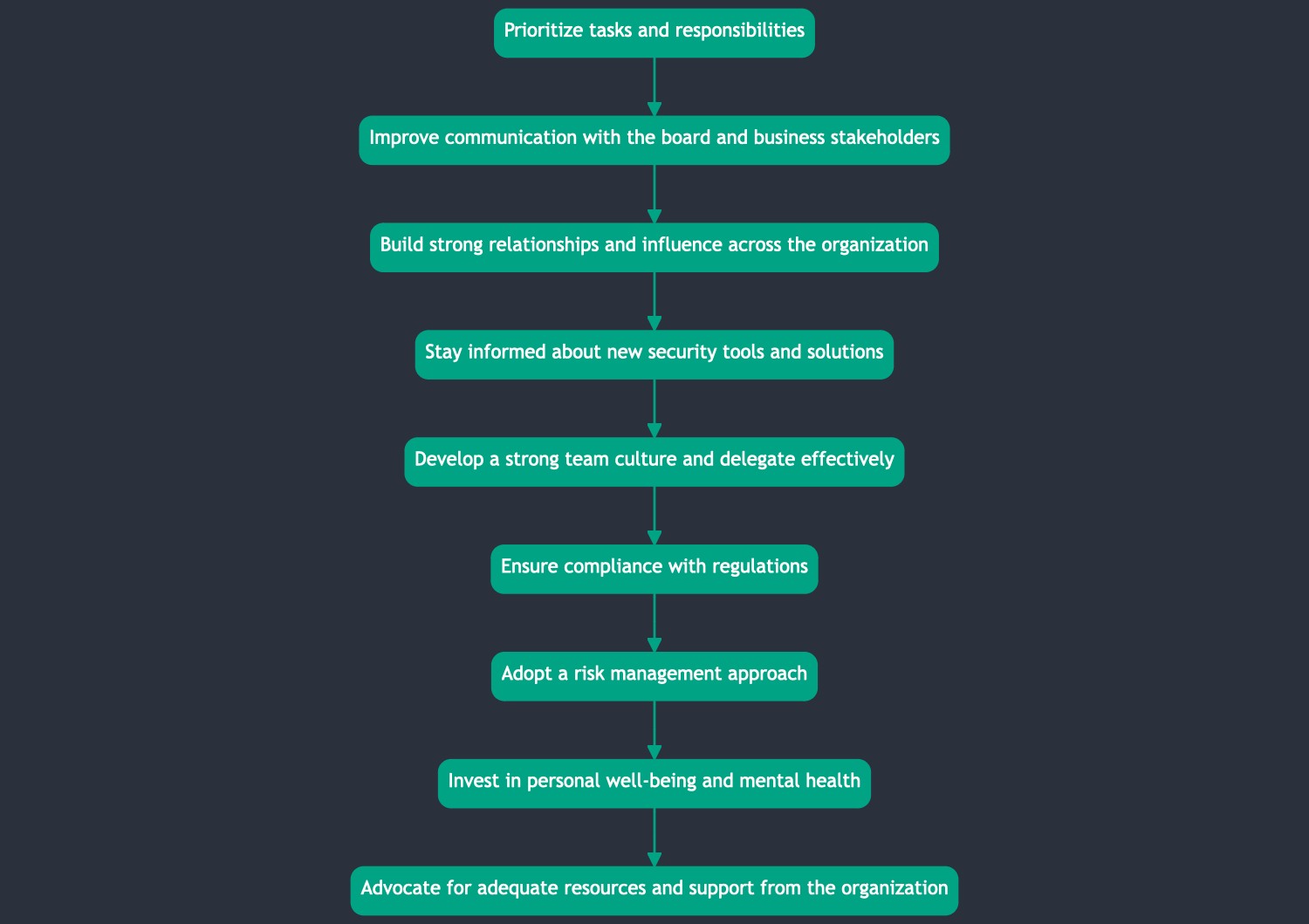
The Ever-Expanding Scope of the CISO Role
One of the primary challenges CISOs face is the sheer breadth of their responsibilities. From ensuring the security of critical infrastructure to protecting sensitive data, complying with a myriad of regulations, and aligning with overall business objectives, CISOs must have deep expertise across all cybersecurity domains. This requires staying up-to-date with the latest threats, vulnerabilities, and best practices in an ever-evolving field.
But the role extends far beyond just technical know-how. CISOs also need to understand the legal domain, privacy regulations, crisis communications, employee engagement, and HR issues. Industry-specific knowledge is crucial too - a telecom CISO should grasp the intricacies of RAN, Core, Transport and BSS to adequately evaluate and communicate risks. It's an incredibly tall order for any one individual.
Keeping Up with the Rapid Pace of Change
The cybersecurity landscape is constantly shifting, with new threats, technologies, and regulatory requirements emerging at a rapid pace. CISOs must stay on top of hundreds of new security tools and solutions, evaluate their potential benefits and drawbacks, and make informed decisions about which ones to implement - all while threats continue to evolving faster than security teams can catchup.
Influencing Without Authority
CISOs often find themselves in the challenging position of having to influence without authority.
In many organizations, the CISO does not have direct control over all the people, processes, and technologies that impact security. They must work cross-functionally with IT, operations, legal, HR, and other departments to implement security controls and policies. This requires strong relationship-building skills, diplomacy, and the ability to build consensus among stakeholders with competing priorities - which is often an impossible task.
The War for Cybersecurity Talent
The demand for skilled cybersecurity professionals outpaces the supply, making it difficult for CISOs to hire and retain top talent. According to a recent study by (ISC)², the global cybersecurity workforce shortage is estimated to be 4 million. CISOs must compete with other organizations for a limited pool of candidates, often with constrained budgets. This puts additional pressure on security leaders to create a compelling employee value proposition and foster a strong team culture.

The Compliance Burden
CISOs must navigate a complex web of regulations and standards, such as GDPR, CCPA, HIPAA, and PCI DSS. Failure to comply can result in significant financial penalties, reputational damage, and legal liabilities. Staying on top of these requirements is a daunting task, often with limited guidance and support from regulators.
"It's like playing a game of whack-a-mole, except the moles are regulations, and they keep popping up faster than you can hit them."
Doing More with Less
Despite the critical importance of cybersecurity, many CISOs are expected to do more with less. Security budgets are often seen as a cost center rather than a strategic investment, and CISOs must constantly justify their spending and prove their value to the business. This can lead to under-resourced security teams, inadequate tools and technologies, and a reactive rather than proactive approach to security.
Strategies for Success
While the challenges facing CISOs are formidable, there are strategies that can help them succeed in this impossible job:
Invest in yourself. Make time for your own professional development and well-being. Attend conferences, join peer groups, and seek out mentors and coaches to help you navigate the challenges of the role.
Inform business leaders that cyber risk is their risk. It's a business risk, not just an IT issue. CISOs need a seat at the leadership table to adequately communicate and manage risk.
Stress the real cyber risk tolerance level with the board. Make sure they understand that zero risk is not possible and they need to choose which threats they are willing to accept.
Act as a fully accountable leader, not just an advisor. Take ownership, make hard decisions, and do what's best for the company. That's what separates a true CISO from just an infosec lead.
Stay agile. Embrace a flexible and adaptable approach to security that can quickly respond to new threats and opportunities. Continuously reassess and adjust your strategy as needed. Not everything is important.
Partner with the business. Build strong relationships with business leaders and work together to embed security into the fabric of the organization - often easier said than done. Position security as an enabler rather than a blocker.
Communicate effectively. Develop clear and compelling ways to articulate security risks and initiatives to different stakeholders. Use metrics and dashboards to show progress and impact. Tailor your message to your audience, whether it's the board, business leaders, or end-users.
"If you can't explain it simply, you don't understand it well enough."
Build a strong team. Invest in hiring, developing, and retaining top talent. Foster a culture of collaboration, innovation, and continuous learning. Empower your team members to take ownership and make decisions.
Prioritize ruthlessly. Focus on the most critical security risks and initiatives that align with the business strategy. Learn to say no to projects that don't move the needle.
Conclusion
The CISO role is not for the faint of heart. It requires a unique blend of technical expertise, business acumen, leadership skills, and resilience. CISOs face an uphill battle, with an ever-expanding set of responsibilities, a rapidly changing threat landscape, and limited resources.
However, by focusing on the most critical priorities, building a strong team, partnering with the business, and investing in themselves, CISOs can rise to the challenge and make a real difference in the fight against cyber threats.
To CISOs, I say this: Embrace the impossible. Lean into the challenges. And remember, you are not alone. Together, we can navigate the complexities of this role and build a more secure future for our organizations and society as a whole.
Over to You
What's your biggest challenge as a CISO, and what strategy have you found most effective in overcoming it? Share your experiences and insights in the comments below.

